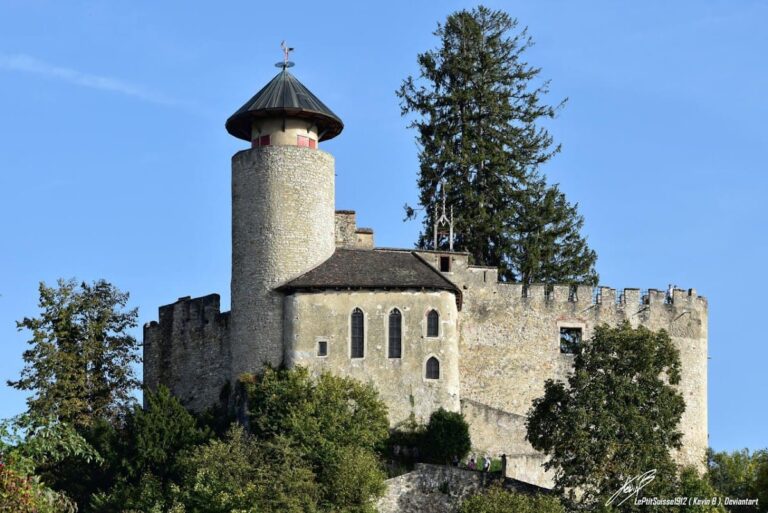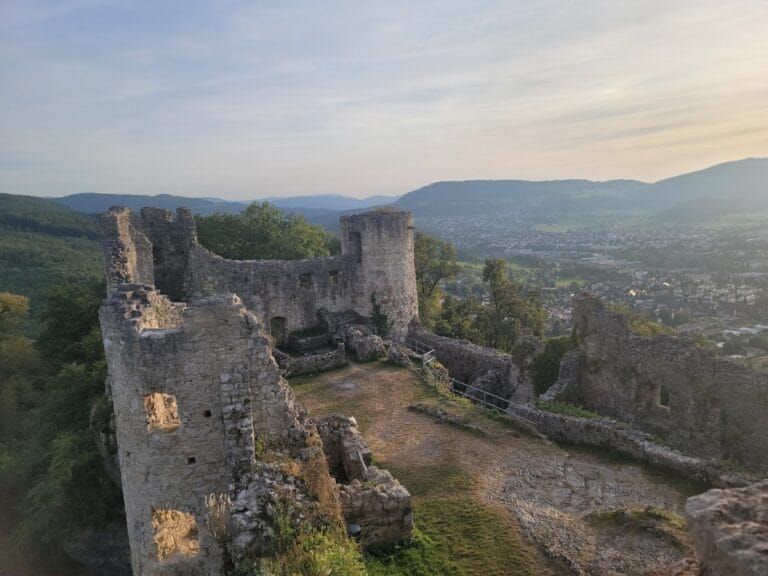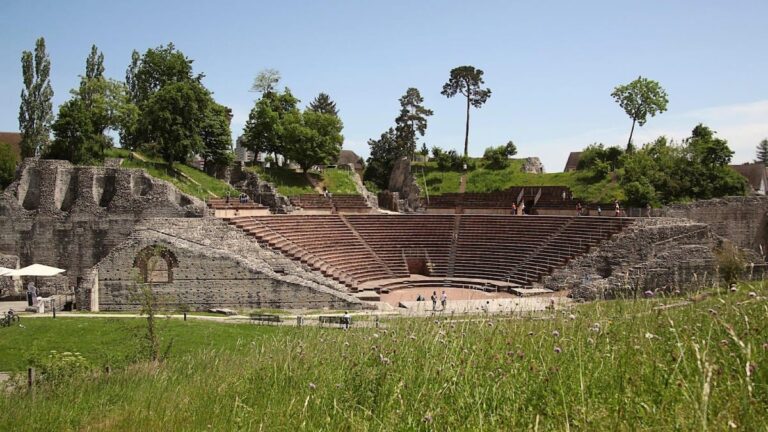Neu-Schauenburg Castle: A Medieval Fortress in Frenkendorf, Switzerland
Visitor Information
Google Rating: 4.1
Popularity: Very Low
Google Maps: View on Google Maps
Official Website: www.frenkendorf.ch
Country: Switzerland
Civilization: Unclassified
Remains: Military
History
Neu-Schauenburg Castle is situated in the municipality of Frenkendorf, Switzerland. This medieval fortress was constructed by a branch of the Truchsessen family of Rheinfelden, a noble lineage active during the High Middle Ages. They identified themselves as the Lords of Schauenburg and established the castle to protect their hereditary lands during a period marked by shifting feudal dynamics.
The origins of the castle trace back to the 11th or 12th century, as suggested by archaeological finds such as pottery fragments dating to the mid-12th century. These indicate the presence of an earlier fortification preceding the 13th-century structure whose ruins remain today. The Schauenburg family first appears in records from the mid-13th century and became extinct by 1385. The castle played a pivotal role during this time in securing allodial—freely held—territories amid pressures from expanding feudal authorities.
The devastating Basel earthquake of 1356 damaged many structures in the region. Neu-Schauenburg was repaired following the quake and continued to be occupied, in contrast to its nearby counterpart, Alt-Schauenburg, which was soon abandoned. Ownership of Neu-Schauenburg passed among several parties over the following decades, including knights bearing the title Vitztum, a return to Truchsessen hands, and later individuals of considerable wealth from the nearby city of Basel, such as Konrad Sintz and Henman Offenburg.
By the 15th century, the castle ceased functioning as a noble residence and gradually fell into disrepair. Around 1480, religious women known as Beguines—lay sisters who lived in community but outside formal monastic vows—took residence in the castle towers, establishing a cloistered house that lasted until 1523. This religious use marked the final phase of active occupation within the castle itself.
Later developments in the area included the discovery of mineral springs in 1691 near the ruins. A bathhouse was constructed to take advantage of these waters. By the late 18th century, a small rural estate with adjoining fields was established adjacent to the castle site. Over time, the castle became known as Neu-Schauenburg, or New Schauenburg, a name reflecting its continued use after Alt-Schauenburg was abandoned, despite having been built earlier.
Remains
Neu-Schauenburg Castle occupies a rocky outcrop approximately 600 meters above sea level. Its floor plan adapts irregularly to the shape of the uneven rock spur on which it stands, divided along its summit by a narrow band of exposed stone into two distinct terraces.
Encircling the site is a curtain wall roughly two meters thick, constructed to follow the contours of the rock platform. This defensive wall encloses the irregular space atop the spur and served to protect the castle’s interior during the Middle Ages. Access was provided from the western side via a ramp that curved around the northern corner, leading to an entrance gate on the northeast. Remnants of this gate area persist today, though much has been altered by modern construction. Some evidence suggests that a small outer enclosure or defensive courtyard, known in German as a zwinger, may have existed near the gate.
The castle’s lower terrace on the western side once housed a residential wing, extending along the curtain wall where inhabitants lived and conducted daily affairs. On the higher eastern terrace stood a bergfried, a tall main tower characteristic of medieval fortifications, which likely served both as a stronghold and lookout point. This tower was entirely dismantled during the erection of a contemporary viewing pavilion, which has replaced the original masonry.
Around the western base of the rock, traces of a faint and shallow ditch have been linked to an earlier fortification phase dating from the 12th century, likely part of the predecessor castle’s defenses. While much of the structure is in a ruined and partially preserved state, fragments of medieval masonry remain visible, bearing witness to the castle’s extensive history. Adjacent to the site, north of the ruins, a religious brotherhouse was established in the 15th century. This building has since been transformed into a farmstead known as Neu-Schauenburg, maintaining the historic name within the local landscape.







